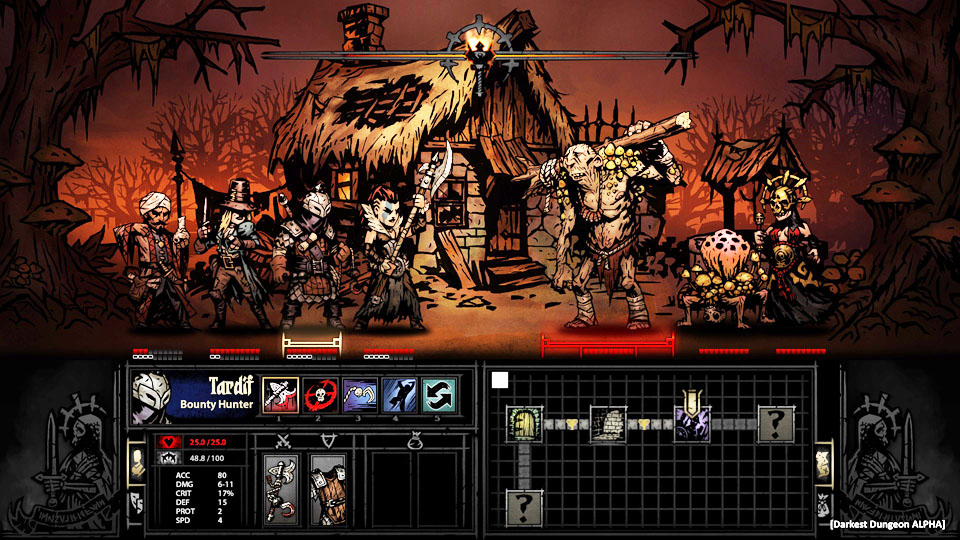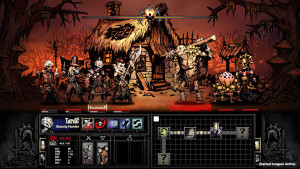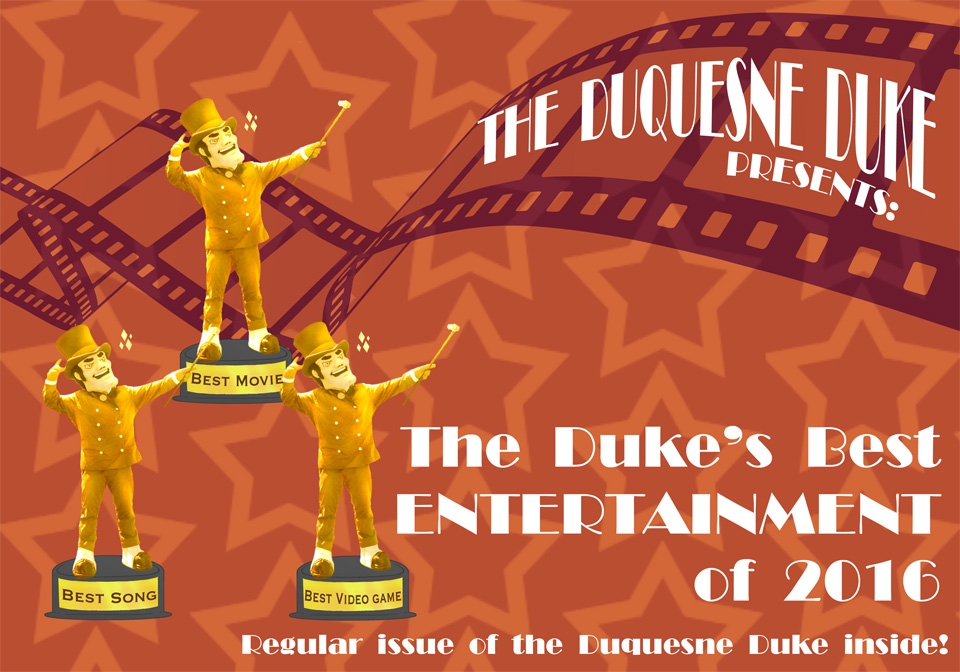
By Sean Ray | a&e editor

“Darkest Dungeon” enjoyed a long early access period before its offical release. The game entered early access on Jan. 30, 2015 for backers of the game’s Kickstarter and to the public on Feb. 3, 2015.
Long did I stare into that stygian abyss, fearing to make my band of holy men, cut-throats and mercenaries take but one further step into the all-encompassing darkness that awaited us.
“Darkest Dungeon” is a turn-based role-playing game developed by Red Hook Studios. Taking inspiration from the Cthulhu Mythos and the video game “Dark Souls,” “Darkest Dungeon” tasks the player with leading a band of “heroes,” mostly comprised of mad men, thieves and beggars, to victory over eldritch abominations unleashed upon the country side.
The game is brutally difficult, depending on the player to carefully plan his or her team of four adventurers for each dive into the various dungeons that litter the land. Characters are permanently killed upon death, much like the video game “XCOM,” and bad luck abounds in this dark fantasy.
What is perhaps the best aspect of the game is its presentation. The art design of the entire experience is absolutely gorgeous, with characters, enemies and environments all rendered like something out of a horrific painting. A sense of gloom and doom hangs over everyone’s head in “Darkest Dungeon,” with character designs featuring dark shadows and rough edges.
Building upon the wonderful art design is the best narrator in a video game since “Bastion.” Voiced by Wayne June, the narrator speaks in an archaic and haunting manner, each word dripping with terror. Do not be surprised to find your vocabulary expanded upon with words like “prodigious,” “malformed” and “tenebrous.”
That is not to say the game play is lacking. “Darkest Dungeon” innovates on the traditional turn-based combat system in several ways. As the hallways of the dungeons are cramped and narrow, characters must be placed in specific positions to use their attacks. For example, the Plague Doctor class can only use her stun and toxin grenade attacks while in the back two spots of the lineup, while being unable to use her knife unless she is near the front.
Compounding upon this are the various resources the player must keep track of. Adventurers need food to eat while exploring, torches to light the way, bandages to heal bleeding wounds and anti-toxin to cure blight, among other things. Players must also keep track of how much gold and heirlooms they pick up on a quest, which are used to upgrade heroes and the hamlet used as home base. With limited inventory slots, players will have to choose between carrying some extra food to keep their warriors full or grabbing a bag of gold to improve weapons and armor later.
The game also features a stress system; heroes will be traumatized by the things they see and begin to panic. At high levels of stress, characters may either break under the pressure or rise above adversity and become even more heroic. However, no matter which of the two occur, taking more stress can result in the hero instantly dying from a heart attack. Characters may also develop long-term quirks, which can be either positive or negative.
“Darkest Dungeon” also features a surprisingly diverse group of characters. The game features 13 heroes, with a good deal of them being females. Unlike most RPGs, the women are not consigned as healers or mages either, but also serve as melee fighters and sneaky assassin classes.
However, the game is not perfect. While the player has to keep track of what position their heroes are in, it is rather annoying that they cannot exploit the enemies’ position. Why is it the Vestal can only cast spells in the back row, while dragging an enemy spell caster up front or pushing a melee fighter back does not affect which attacks they can use?
Furthermore, there is not really a way the player can lose the game. New heroes can always be recruited, gold funds can always be rebuilt and bosses will always be eventually beaten. “Darkest Dungeon” could have learned a lot from “XCOM,” a similar style of game in terms of management, which can cause the player to lose from either running out of money or having the enemies attack their base.
Still, these flaws do little to deter from the overall majesty of “Darkest Dungeon.” The game is gorgeous and difficult, but not unfairly so (most of the time). For anyone who loves dark fantasy or challenging video games, “Darkest Dungeon” is a must have.
“Darkest Dungeon” can be purchased on Steam for $19.99.

